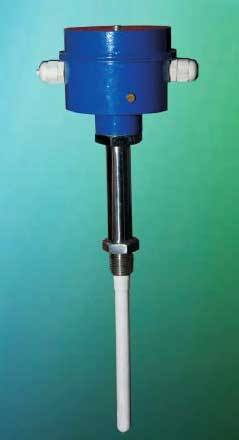
Company Information
Ask for more detail from the seller
Contact SupplierSpecifications
| Transmitter & Probe Principle of Operation | RF Capacitance/Admittance |
| Probe | Fully Insulated (HDPE/PTFE)SS rod/Coaxial Probe |
| Probe Length | As per the tank height |
| Enclosure | Nylon |
| Compensation for moisture | Provided |
| Enclosure Protection | Weather proof- IP65 |
| Wetted Parts | SS 316/ HDPE/PTFE |
| Process Connection | Flanged /screwed |
| Flange Standard | ANSI |
| Flange Size & Rating | 1 ½" 150 lb. |
| Mounting | Silo Top |
| Electrical Connection | ¾" E.T |
| Power Supply | 10 to32 V,DC(or from display unit) |
| Cable Type & Size | 3core x 0.75 sq.mm screened PVC cable |
| Output | 4 - 20 mA |
| Dimensions | 65 mm () x 100mm (H) |
Control & Display Unit (Micro Controller Based)
| Power Supply | 220V, AC,50 Hz./ 24V,DC |
| Power Consumption | < 10 Watts. |
| Sensitivity Adjustment | Provided |
| Enclosure | Weatherproof |
| Mounting | Wall mounted / Panel Mounted |
| Alarms | Upper & Lower limit,230V,5A change over contacts |
| Display | 5 Digit LED Display /4Digit LED +20segment Bargraph |
| Calibration | Field Calibration Facility |
| Accuracy | 0.01% of FS |
| Resolution | 1/65000 |
| Dimensions | 92mm x92mm x110mm /48mm x 92mm x110mm |

